

The Making of an Elite Recruit, Class of 2024
2/12 CGC Staff
When you look at the top of various junior golf rankings, you will find a group of players that grace the leaderboards of AJGA Invitationals and the most prestigious junior tournaments in the country. Some find early success in amateur events. You wonder how they got to that point, the progression of their junior career, and the training routines that it takes to achieve such a high standard of performance. We are fortunate that six of our top-10 American recruits in the class of 2024 gave us some insight into their golf journey and what it takes to become an elite recruit.

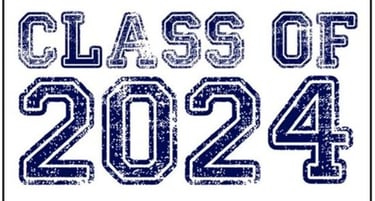
Early Starters
Pennsylvania’s Nick Gross has long been one of the top recruits in this class, finding success at a young age and rewarded with a scholarship to play for the University of Alabama in the fall. His first competitive round of golf was right before his sixth birthday, and it was a 9-hole local tour event. He shares, “I just always seemed to find myself drawn to golf. My parents tell stories about how we would watch golf on TV and I would start swinging and imitating the pros on TV. I would play with plastic clubs in the backyard, and I think the biggest thing was that I loved it, so I wanted to keep doing it.” When he was younger, he played numerous US Kids events in his area, and ended up playing their regionals and US Kids Worlds in Pinehurst. “As I got older, I started playing more 36 and 54 hole events away from home. I think that this route benefitted me because I was able to see that I really loved the game, and I was able to grow into the player I am now by progressing through different levels of events. I learned along the way, and I think if I changed my path at all it would be a completely different story. I cannot thank my family enough for giving me those opportunities to compete and grow,” Gross adds.
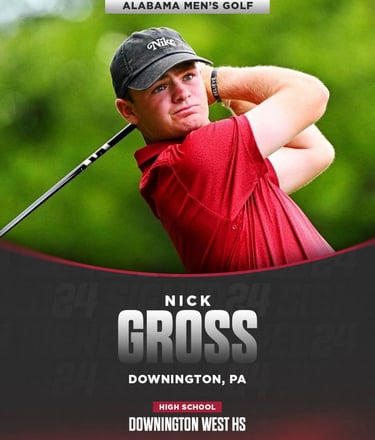



Stanford University-bound Jay Leng of California also began tournaments at the same age as Gross and began showing interest in the game when his dad brought him to the course, also with plastic clubs. He put his foot on the gas early with competition, saying, “I got into competition very early and at a high level. This was crucial to my development as a player. I got exposed to better players and quickly learned and progressed. I think it is important to play against top players to ultimately get your game to the next level. You can learn so much more and it is okay if you don’t win everything. I would not have changed anything, but if I would, I would have played against older and more experienced players. It doesn’t hurt to see how you fare against the older guys sometimes so you can learn from them.”


Another athlete who began tournaments at an early age is Californian William Ma, who earned the opportunity to attend Harvard University for his fine play. “I participated in my first competitive golf tournament at 6 years old. We had a friend that played golf who also lived on our street, and I got interested in the game just by following him and his son to the range.” Ma also began in 9-hole events before transitioning to bigger events, stating “I got into high level competition pretty early by qualifying and participating in the IMG junior worlds each year from ages 8-13, and the US Kids Worlds from ages 10-13. I do think that the route I took was beneficial, as it gave me a lot of cumulative tournament experience, and I wouldn’t change it even if I could.”
Eased Into Competition


In contrast, three other top recruits began competition later, proving that you don’t need to chase bigger tournaments at a very young age. Massachusetts native Ryan Downes is a Vanderbilt University signee and began tournaments later, noting “I started playing golf competitively when I was about 10 years old and didn’t start playing in larger tournaments until I was around 14 or so. My dad is the head golf professional at my club, so that is the big reason why I became interested in the game. I really eased into events as I started out playing 9-hole events which gradually transitioned into longer tournaments. I believe this is the correct path as I didn’t ever feel rushed or burned out. The one thing I wish I might have changed would be to play some more 18-hole events when I was young. Overall, I think taking it slow was a good way to go.”
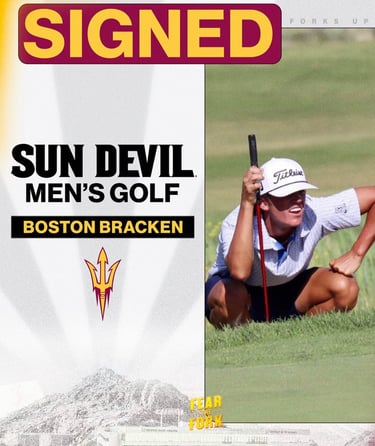

Arizona State University-bound Boston Bracken took a similar path, beginning the sport at age nine, stating “I would go out with my dad and his brothers a couple times a year, drive the cart and watch, then I decided I wanted to get in on the fun. I started taking lessons from a guy in town for a couple of years while still playing other sports. I stopped playing football and basketball at 13 to focus on golf and started playing more tournaments.” Bracken looks back and wishes he would have started playing at a younger age, as he felt he was always a little behind his competitors, but also says “I wish I would have played other sports until I was 15 or so, just to condition to build muscle, touch, and rhythm in different sports. I am very grateful for my parents who have pushed me and allowed me to reach it this far.”

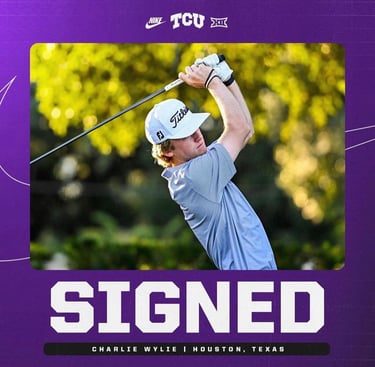
Texas Christian University signee Charlie Wylie could be called a late bloomer, as he shot up the junior rankings in the last year. He tells us, “By the time I reached my freshman year of high school, I had only started playing tournament golf. As a child, I used to play both baseball and golf, dividing my time equally between the two. It was my grandfather, who was a pro and had taught Angel Cabrera when he won his two majors, that sparked my interest in golf. Additionally, my mother played at TCU, which further fueled my passion for the sport.” Looking back, Wylie is glad he eased into competitive golf and started slowly. “It made it fun to start with less intense tournaments and ease into high-level golf. It taught me how to play golf the right way and how to score,” he adds.
Training Routines
We asked each athlete to tell us about their in-season and off-season training routines, and there were many similarities in their answers. In-season, Gross, Downes, and Bracken love to spend time playing on the course more than beating balls on the range and have similar philosophies. Downes shares “I’m at the course most of the day when not in school. I am more of a ‘player’ than a range rat, and I like to be out on the course as much as anyone. I find it easier to adapt to real time situations rather than just beating balls.” Gross concurs, “I put a lot of emphasis on playing and practicing on the course. I will still do drills and work on mechanics, but at the end of the day golf is played on the course, and I find that when I play and learn on the course, I ultimately play better in tournaments.” You can feel Bracken’s love for the game in his answer “I love the game of golf. I love to swing a club, hang out at the course, or just talk shop. I’m at the course from sunup to sundown. I play a lot more than I practice, which is good and bad, got to find what works for you.” Ma and Leng seem to be more regimented in their practice and range routine, with Ma offering “I am always working to prepare for my next event. There’s obviously a lot more time to practice during breaks or weekends, when I will have time to work on all parts of my game and go on the course. On a normal school day, I’ll go straight to the course after school, hit around 80-100 balls, then utilize whatever time I have left before dark to work on short game and putting.” Leng’s routine on school days includes one hour on the range, one hour with short game and putting, and playing nine holes.
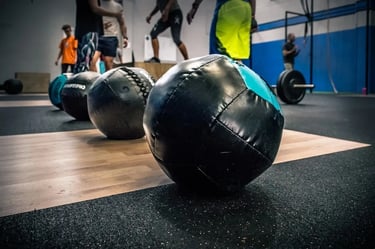

For those golfers who have an off-season, training is about getting stronger and honing in on improving specific parts of their game. Wylie shares “I focus on improving my swing, increasing my speed, and building my strength. I tend to make more significant changes while I am not in the tournament season.” Fitness is important to some athletes, as Ma tries to get three fitness sessions in each week, one with a trainer and two on his own. Gross works on the whole package, stating “I put more emphasis on improvement. I try to improve my mechanics, my body, and my mentality.” Downes, being in a northern state, tends to work harder in the gym, adding “In the off season, I work out around 4 days a week and try to get stronger in every aspect. I always look to get a little advantage over everyone.”
“In the winter I use a trackman simulator at my home course. I hit balls on most days of the week for an hour or two. It isn’t fun not being able to play often in the winter, but I like to use it to work extremely hard in the gym. I am not a very big kid so I feel like I need all the speed I can get. The winter is a great time when you don’t have to worry about your game too much and you can work on getting stronger.” -Ryan Downes, Vanderbilt University
Speaking of northern states and colder climates, we specifically asked Gross and Downes how they keep their game sharp when they can’t practice outdoors. Both find it challenging and not particularly enjoyable, but they are able to work on their game on simulators. Gross says “The biggest thing for me in the winters is getting better, so I spend a lot of time improving my golf swing with a simulator, improving my stroke on indoor greens, and getting both my mind and body stronger for the next season. A lot of this is done with the help of my coach, John Dunigan. We know that I can’t go outside like some people can, but we still figure out ways to improve my game.” It works for him, as in 2023 he won an AJGA Invitational in the month of February. Downes adds “In the winter I use a trackman simulator at my home course. I hit balls on most days of the week for an hour or two. It isn’t fun not being able to play often in the winter, but I like to use it to work extremely hard in the gym. I am not a very big kid so I feel like I need all the speed I can get. The winter is a great time when you don’t have to worry about your game too much and you can work on getting stronger.” Despite the lack of outdoor practice, he picked up a top-10 finish at the Jones Cup Junior in December.
Mental Training
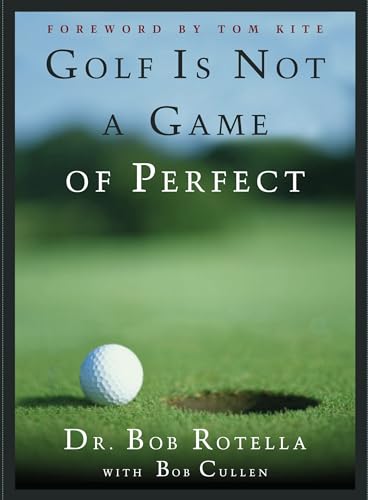



We’ve talked about the physical part of training, but what about the mental aspect of playing golf? Interestingly, Wylie is the only one of the six who works with a mental coach, although others have read mental training books to gain some techniques and knowledge or seek advice from their swing coaches on the subject. Wylie notes “She has helped me so much. One of the biggest lessons I’ve learned is that golf is still just a game. It is supposed to be fun. I have thought about It a lot and have taken that seriously. That mindset has freed me up and taken the pressure off my scores.” Gross, Downes, and Bracken have delved into literature or podcasts. “I have always tried to remain very calm on the course as it helps me stay focused. I have read the book ‘Golf is Not a Game of Perfect’ and I feel like it’s a book many juniors should read. It helped me so much with my mental game,” offers Downes. Gross has developed a positive outlook from an author that influenced him, saying “I have read books written by Bhrett McCabe. From those, I have learned the importance of process-oriented thoughts and goals and being willing to accept mistakes when they come. I have also learned how important the rest of your life is when it comes to your mental state. The mental game is the hardest part
of the game, but it is what separates the elite from the good.” Bracken adds “I have read many books and listened to podcasts on the game of golf and how to become better. The mental side of the game is the most difficult and hardest to dial in. The most important thing I have learned is to enjoy what you are doing and always have a positive attitude no matter the circumstance.” Ma doesn’t work with a mental coach, but he and his swing coach place high emphasis on having a strong mental process. “The biggest lesson that I’ve learned is to always stay in the moment and fully commit to whatever shot I am attempting to hit. A good mental process for me consists of 1. Visualizing what I want to do with the shot, 2. Knowing the feel to achieve what I want, and 3. Committing to the feel,” he notes.
The Moment They Knew...
"I remember playing the 2021 Scott Robertson Memorial, and the field had some of the best juniors in the country. I remember being T2 after the second round, and that is really when I proved to myself that I could compete. Even though I didn’t play well in the final round, I walked away knowing that I was good enough to compete with the best of the best.” -Nick Gross, University of Alabama
It can be a long hard road to the top of the junior golf rankings, and it can be daunting when a golfer starts competing in higher profile events. We asked each athlete at what point in their junior career they realized that they could compete with the best juniors in the country, and if there was one tournament that they felt was a turning point in their career. Gross had always challenged himself against older players, but it took a while for that belief to really manifest itself. He says, “I played a lot of big events where I felt like I had to do something extra just to compete with the other guys. I kept playing and gaining experience, and ultimately, I broke through. I remember playing the 2021 Scott Robertson Memorial, and the field had some of the best juniors in the country. I remember being T2 after the second round, and that is really when I proved to myself that I could compete. Even though I didn’t play well in the final round, I walked away knowing that I was good enough to compete with the best of the best.” Gross has racked up many high finishes and a strong run in the US Amateur since then. Downes realized his talent level in the summer of 2022, stating “I had a pretty poor spring season that year, but I started to heat up around late June and started putting together good rounds. The turning point for me was the 2022 Massachusetts Amateur. I ended up making it to the final match, but ultimately came up short. I knew at that point I was good enough to compete in high level events with great competition.” He went on to win that same championship in 2023. Ma also started playing some of his best golf in 2022, noting “I got into the PING Heather Farr Classic, an AJGA open event that featured a very strong field. Going into the event, my only goal was to make the cut, but I ended up exceeding my expectations and finishing tied for 7th. The event gave me a lot of confidence in knowing that my game was trending in the right direction.” Wylie and Bracken have always had confidence in their games, but each had a defining moment that solidified their belief in themselves. Wylie remembers “The tournament that proved it was the 2023 Junior Byron Nelson. I shot 64 in the first round and was toe to toe with some great players for the rest of the tournament.” Wylie followed that tournament with two Invitational top-5 finishes. For Bracken, it was his tie for second at the IMG Junior World Championship in 2022, and he describes “I felt I belonged at the top and could compete with anyone. I earned a lot of respect from others at that point, which boosted my confidence. Every week there are a number of people that could win an event. It's just a matter of who gets hot.”
The Advantages of Invitationals & High Profile Events


One of the advantages of having a high ranking is the ability to get into AJGA Invitationals and high profile national events. Each of these athletes has achieved that status and are grateful to participate in these tournaments, noting various benefits as compared to regional competition. The standard of competition is high, the courses are challenging, and these tournaments provide the athletes with excellent preparation for college competition. Ma, who played in six invitationals in the past year, shares his thoughts, “I am especially grateful for the opportunity to compete in AJGA invitationals as I always feel like I have a chance to learn from the best and am often inspired by the level of competition that is around me. Besides having a stronger field, these events often take place at amazing and challenging courses, some that even host tour events (Sedgefield, Bethpage Black, TPC Sawgrass). It’s a great way to test my game at these tournaments. The courses are very revealing of areas that I am doing well in, and areas of my game that need more work, and I will definitely take these learning experiences into college golf. In addition, the events are run very well, and have an awesome player experience, giving the participants a feel for what it's like to be on tour.”
“Playing with elite competition each week is very helpful, learning and seeing how guys do what they do, and not one person is the same. These events are good for learning how to hit different shots, playing on different grasses, adjusting to weather, altitude, and pressure. Playing in bigger junior events has helped me realize where my game stands to the next best juniors in the country.”- Boston Bracken, Arizona State University
Leng agrees that the courses are another level, stating “You play the best of the best courses that are very demanding. Your game needs to be sharp and any weakness you have will be exposed. They prepare you well for the tough college golf courses and competition. They train you mentally to aim for pars sometime as well and not worry about being over par at times.” Downes finds more value in playing these events, “In these bigger events, the competition level is just super high. I find that I can play alright golf and win smaller events, but I get more value playing in high profile events with great fields. Playing in these events has allowed me to feel much more confident and under control in big moments.” In addition to better fields, Gross notes the more difficult course setups help his game, adding “The margins for error are smaller in elite junior golf, and even smaller in amateur golf. Learning to plot your way around a golf course is huge in development, and I think those events do a good job of exposing juniors to tougher setups." Bracken also uses big events as a learning experience that will translate to college, saying “Playing with elite competition each week is very helpful, learning and seeing how guys do what they do, and not one person is the same. These events are good for learning how to hit different shots, playing on different grasses, adjusting to weather, altitude, and pressure. Playing in bigger junior events has helped me realize where my game stands to the next best juniors in the country.”
Photo: ajga.org
Learning From Success
Speaking of big events, these athletes have found success in many tournaments that have provided them with learning experiences that have helped both their physical and mental games in future events. Gross and Bracken both have experienced playing in the US Amateur and the tournament has prepared them for high pressure situations. Gross, who made a historic quarterfinal run in 2022 and played in the round of 64 in 2023, felt pressure in 2022 but had several things keep him calm. “First was my caddy, Rob. We have a great relationship, and I think having someone to just talk to was helpful for me. I also tried to just take a step back and appreciate how far I had gotten. I wasn’t expecting to go as far as I did, and I wanted to make sure I enjoyed playing deep into match play like I did. Playing with that joy kept me light and free of expectations. The last thing that I kept telling myself was that I had been nervous in golf tournaments before, and there had been plenty of times when I performed under pressure, so why couldn’t I do it again,” he shares. Bracken qualified for the tournament in 2023 and for him, it was a special experience. He notes “The golf course was nothing like I've experienced. Very firm and fast greens. Rough like cabbage. When playing hard golf courses, it exposes your weakness very fast. I learned a lot from the US Am, and hopefully I will be playing in a lot more of them.” Downes has also found success in several amateur events, becoming the youngest champion in history of the 2023 Massachusetts Amateur and the 2022 & 2023 Francis Ouimet Memorials. He notes that these events provide him with tough competition, sharing “I feel like amateur events are most definitely different than junior events. My state amateur is two rounds of stroke play, then it cuts to 32 for match play. Playing in that event helps me learn how to adapt to course changes over the course of 5 days, while also playing against great amateurs. I am fortunate to have many great amateurs in Massachusetts, which helps me fine tune my game.” Ma has also found success in the amateur ranks, placing 2nd in the Sonoran Amateur two years in a row. He says his mindset is the same in amateur and junior events but “The first time I played in an amateur event, there was less of an expectation on where I would finish in the field, so it freed me up to just focus on playing my best golf and learning as much as I could about my game and college golf.” Leng focuses on junior events and is a two-time AJGA Invitational champion. After winning the AJGA Polo Junior Classic, we asked him if his approach to matchplay is different from stroke play. He states, “Matchplay is very similar to stroke play in a sense but you have to change some strategy. In stroke play, one bad hole is a lot more costly. In matchplay, if the opportunity presents itself then, you can be more aggressive. Personally, my strategy is to play similarly to stroke play and beat my opponent out on proximity to the hole as often as possible. Also, never hitting the ball out of play is important. It is very hard to beat someone who is always closer to the hole than you. It is draining mentally having to make hole-tying putts every hole. You will wear them down. It is also important to keep a calm mental state especially if you are losing.”
Balancing Academics and Golf


Golf is obviously a time-consuming sport and can interfere with academics. As a whole, successful golfers tend to excel at time management and are able to balance the sport with their studies. Leng (Stanford), Ma (Harvard), and Downes (Vanderbilt) are attending institutions that are known for their high academic standards. When asked how he has been able to maintain both his golf game and academics at a high level throughout high school, Ma answered “At the end of the day, it comes down to how effectively I’m managing my time. It’s certainly very difficult to maintain both golf and academics at a high level, but I’ve found that it is achievable if I go about my study time and practice time with intention and purpose. I’ve had to make a lot of sacrifices to get to where I am now, but since I love golf and have a passion for academics, the journey has been less of a grind, and more of a fun, rewarding process.” Leng agrees that time management is key, saying “Not putting off work and not doing it just because you do not feel like it won’t get you where you want to go. Anytime is a good time to study and you can always get ahead. In college this will apply as well.”
Photo: depositphotos.com
Advice to Current Junior Golfers
We thank each of our top-10 recruits for taking the time to answer our questions, and they each have some advice for younger golfers aspiring to become a top recruit or play at a high level division 1 school.
WYLIE: My advice would be to keep grinding. Golf is hard. The physical part, the mental part, and the practicing for so many hours part. You need to make sure you are having fun and enjoying it.
GROSS: I would say that the most important thing is to play more than your practice. When you play you learn something new every time, and while you can get better by hitting 150 range balls, you aren't actually learning. The whole key to getting better is learning, and the best place to do that is on the golf course.
DOWNES: If you want to play at a top D1 school, you have to be willing to put the time in to get better. It may be hard for some people to skip out on non-golf events, but it’s something you have to be willing to sacrifice. I would also recommend playing a few events where you have to travel a little. You want to be able to show coaches that you can play well outside your respective area. For me, that meant going around and playing in different states and in conditions I was not used to. If you can learn on the fly and play well, you have a great shot as long as you put the time in.
BRACKEN: Keep your head down, put the blinders up and focus on making what you do great. There are so many different ways to play the game, find what you do great, and go with it. Work as hard as possible, the opportunities will come. Playing in as many tournaments as possible will help in the long run.
LENG: Play, play, play. I would play many tournaments at the highest level possible without burning yourself out. I would take time though to reflect and improve your game as much as possible before heading to the next tournament. Reaching out to a plethora of colleges does not hurt as well. You should talk to many current D1 players or commits and hear what their experiences were. Listening to this will give you a better insight into how the college golf process works as well as what you should do to improve your chances.
MA: I would say the most important thing is just to embrace and enjoy the process of improvement, focusing on the things that you can control.

